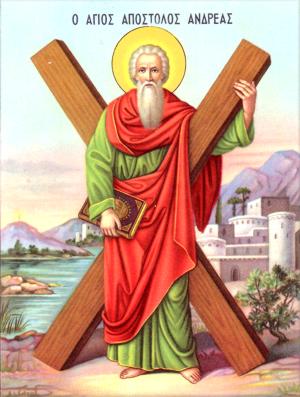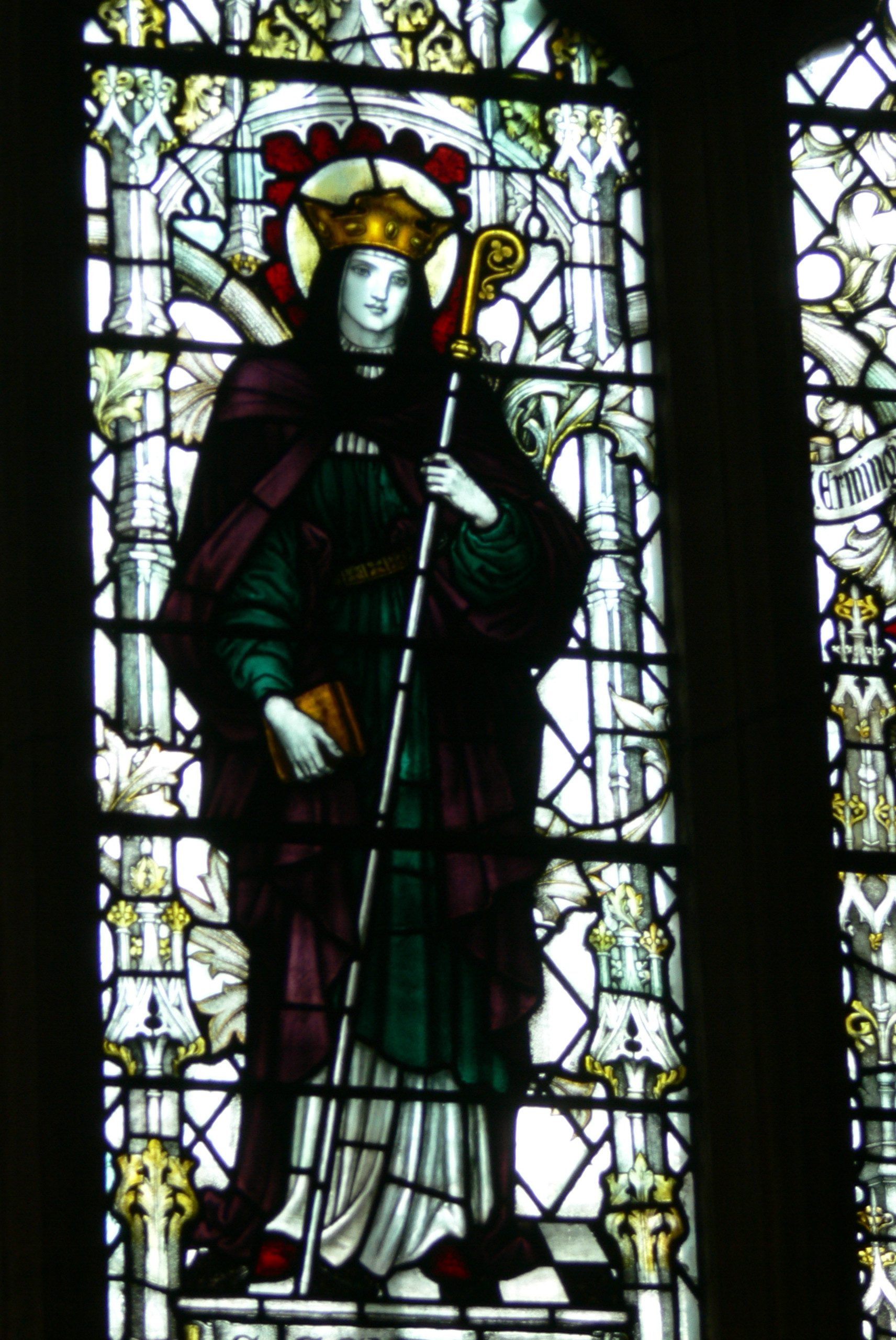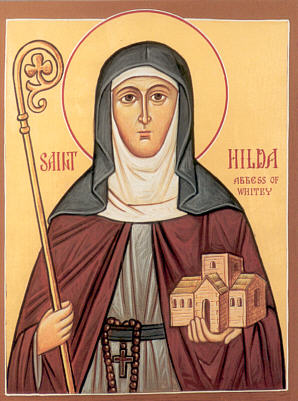By the mystery of Providence, in the South black and white, Africa and Europe, are united - to use the language of the Council of Chalcedon (451 A.D.) - ‘indivisibly, inseparably’, even while these two peoples remain for the most part ‘unconfused’ and ‘unchanged’ (Chalcedonian language from Metropolitan Kallistos (Timothy) Ware, The Orthodox Church, New York, Ny.: Penguin, 1997, p. 26).
To England in the seventh century there came, as if to foreshadow what would happen among her descendants in the South, two saints, one from Europe (Greece) and one from Northern Africa, to help establish the Anglo-Saxons in the Christian Faith. These two, Sts Theodore and Hadrian, were to have a lasting impact on England
St Theodore’s importance in particular was the subject of a collection of essays published recently in honor of the 1,300th anniversary of his repose in 690 A. D., Archbishop Theodore: Commemorative Studies on His Life and Influence, Michael Lapidge, ed., Cambridge: Cambridge UP, 1995 (Anglo-Saxon Spirituality, Notes to the Introduction, Note 21, p. 269).
St Bede mentions Sts Hadrian and Theodore often in his Ecclesiastical History, but we will include here only a couple of the more noteworthy sections from his book about them.
CHAPTER I:
DEUSDEDIT, ARCHBISHOP OF CANTERBURY, DYING, WIGHARD WAS SENT TO ROME TO SUCCEED HIM IN THAT DIGNITY; BUT HE DYING THEREX THEODORE VAS ORDAINED ARCHBISHOP, AND SENT INTO BRITAIN WITH THE ABBOT HADRIAN. [AD 664]
. . .
But the apostolic pope having consulted about that affair, made diligent inquiry for some one to send to be archbishop of the English churches. There was then in the Niridian monastery, which is not far from the city of Naples in Campania, an abbot, called Hadrian, by nation an African, well versed in holy writ, experienced in monastical and ecclesiastical discipline, and excellently skilled both in the Greek and Latin tongues. The pope, sending for him, commanded him to accept of the bishopric, and repair into Britain
There was at that time in Rome, a monk, called Theodore, well known to Hadrian, born at Tarsus in Cilicia, a man well instructed in worldly and Divine literature, as also in Greek and Latin; of known probity of life, and venerable for age, being sixty-six years old. Hadrian offered him to the pope to be ordained bishop, and prevailed; but upon these conditions, that he should conduct him into Britain
CHAPTER II
THEODORE VISITS ALL PLACES; THE CHURCHES OF THE ENCLISH BEGIN TO BE INSTRUCTED IN HOLY LITERATURE, AND IN THE CATHOLIC TRUTH; PUTTA IS MADE BISHOP OF THE CHURCH OF ROCHESTER
[A. D. 669]
THEODORE arrived at his church the second year after his consecration, on Sunday, the 27th of May, and held the same twenty-one years, three months, and twenty-six days. Soon after, he visited all the island, wherever the tribes of the Angles inhabited, for he was willingly entertained and heard by all persons; and everywhere attended and assisted by Hadrian, he taught the right rule of life, and the canonical custom of celebrating Easter. It was the first archbishop whom all the English church obeyed. And forasmuch as both of them were, as has been said before, well read both in sacred and in secular literature, they gathered a crowd of disciples, and there daily flowed from them rivers of knowledge to water the hearts of their hearers; and, together with the books of holy writ, they also taught them the arts of ecclesiastical poetry, astronomy, and arithmetic. A testimony of which is, that there are still living at this day some of their scholars, who are as well versed in the Greek and Latin tongues as in their own, in which they were born. Nor were there ever happier times since the English came into Britain; for their kings, being brave men and good Christians, they were a terror to all barbarous nations, and the minds of all men were bent upon the joys of the heavenly kingdom of which they had just heard; and all who desired to be instructed in sacred reading had masters at hand to teach them.
From that time also they began in all the churches of the English to learn sacred music, which till then had been only known in Kent Kent
Theodore, visiting all parts, ordained bishops in proper places, and with their assistance corrected such things as he found faulty. Among the rest, when he upbraided Bishop Chad Rochester
. . .
CHAPTER VIII
ARCHBISHOP THEODORE DIES, BERTHWALD SUCCEEDS HIM AS ARCHBISHOP, AND, AMONG MANY OTHERS WHOM HE ORDAINED, HE MADE TOBIAS, A MOST LEARNED MAN, BISHOP OF THE CHURCH OF ROCHESTER
THE year after that in which Caedwalla died at Rome, that is, 690 after the incarnation of our Lord, Archbishop Theodore, of blessed memory, departed this life, old and full of days, for he was eighty-eight years of age; which number of years he had been wont long before to foretell to his friends that he should live, the same having been revealed to him in a dream. He held the bishopric twenty-two years, and was buried in St. Peter's church, where all the bodies of the bishops of Canterbury
Here rests fam'd Theodore, a Grecian name,
Who had o'erEngland
Happy and blessed, industriously he wrought,
And wholesome precepts to his scholars taught.
Who had o'er
Happy and blessed, industriously he wrought,
And wholesome precepts to his scholars taught.
The four last are as follow –
And now it was September's nineteenth day,
When, bursting from its ligaments of clay,
His spirit rose to its eternal rest,
And joined in heaven the chorus of the blest.
When, bursting from its ligaments of clay,
His spirit rose to its eternal rest,
And joined in heaven the chorus of the blest.
. . .
Source: (Ecclesiastical History of the English People, Book IV, Chapters I and II, http://www.fordham.edu/halsall/basis/bede-book4.asp, posted December 1997 by Paul Halsall, accessed 30 May 2014; Book V, Chapter VIII, http://www.fordham.edu/halsall/basis/bede-book5.asp, posted April 1999 by Paul Halsall, accessed 30 May 2014)
Sts Theodore and Hadrian, holy examples of peace and cooperation between races, teachers of piety and all manner of learning - pray to the Lord for us unworthy sinners at the South!
(Icon from this web page: http://www.allmercifulsavior.com/icons/Icons-Theodore.htm)




